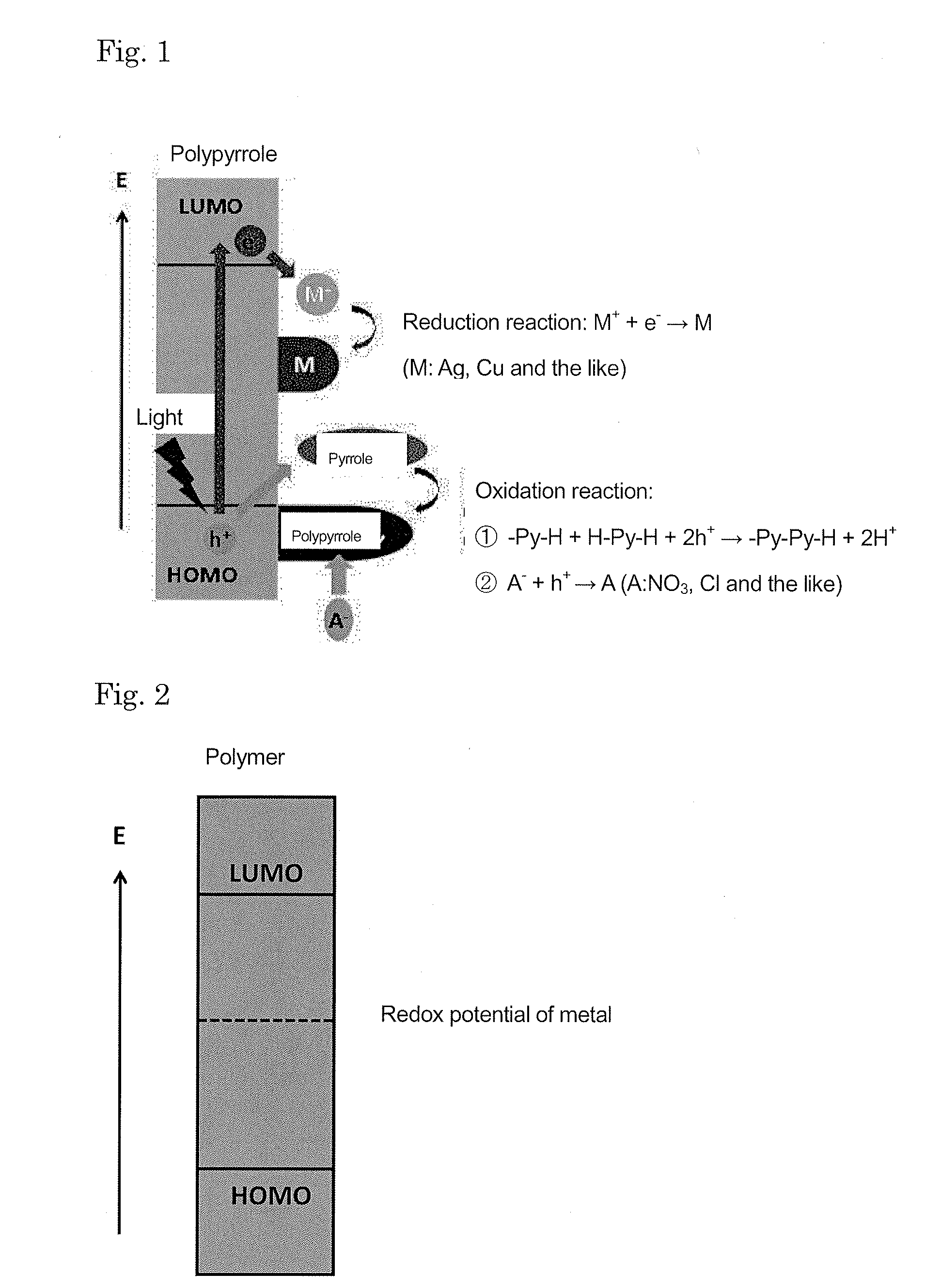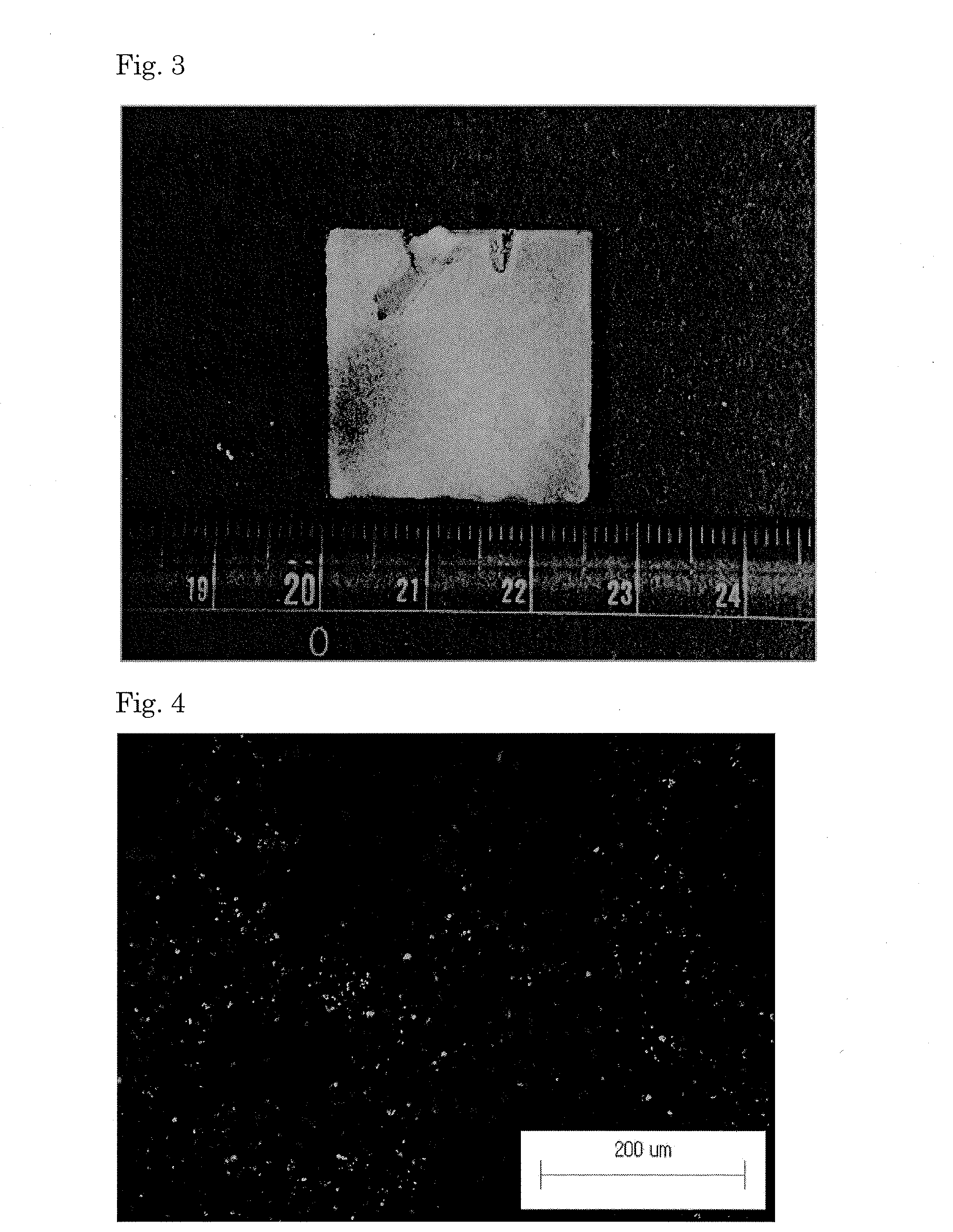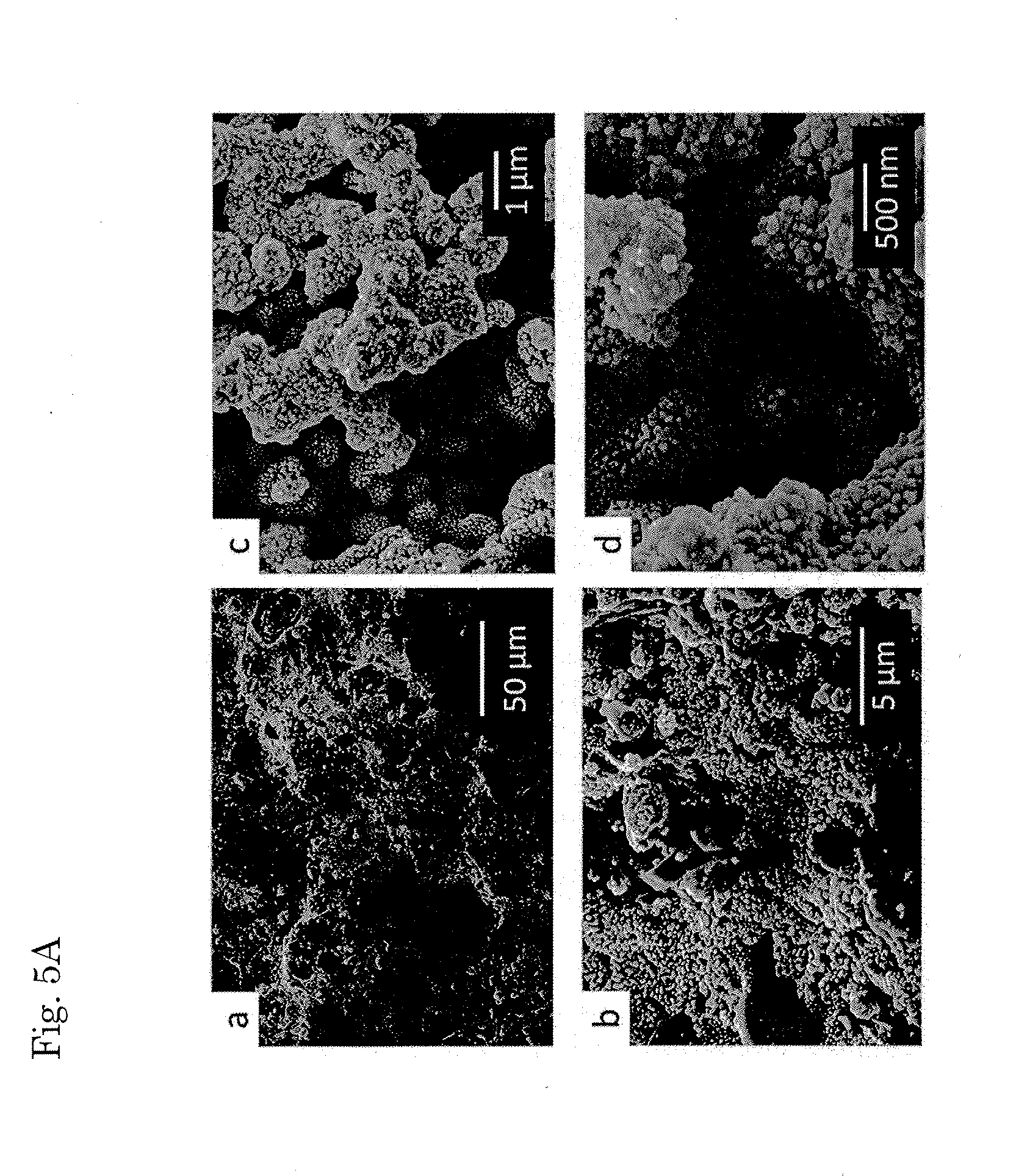Adhesive body between conductive polymer-metal complex and substrate and method for forming the same, conductive polymer-metal complex dispersion liquid, method for manufacturing the same and method for applying the same, and method for filling hole using conductive material
a technology of conductive polymer metal complex and substrate, which is applied in the direction of conductors, mechanical vibration separation, semiconductor/solid-state device details, etc., can solve the problems of increasing the packaging area as well as the elongation of the signal transmission path, and the material obtained by this method also failed to achieve a sufficiently high conductivity. , to achieve the effect of fine conductive pattern, high stability and satisfactory storability
- Summary
- Abstract
- Description
- Claims
- Application Information
AI Technical Summary
Benefits of technology
Problems solved by technology
Method used
Image
Examples
reference example 1
[0110]Using pyrrole, 3,4-ethylenedioxythiophene (EDOT) and aniline as monomers for obtaining a conductive polymer, Cu2+ and Ag+ as metal ions and chloride ion (Cl−) for Cu2+ and nitrate ion (NO3−) for Ag+ as anions, ultraviolet light irradiation was performed to precipitate a conductive polymer-metal complex. With varying types and concentrations of the monomers and varying types and concentration of the metal ions, 30 types of experiments were performed. It should be understood that these are merely examples and are not intended to restrict the technical scope of the present invention which is defined in Claims. These experiments were performed using the following experimental conditions and measurement conditions.[0111]Typical experimental condition[0112]Temperature: Room temperature[0113]Solvent: Acetonitrile, ethanol and water[0114]Substrate: Glass[0115]Ultraviolet light intensity: 50 mW / cm2 [0116]Wavelength: 436 nm, 405 nm, 365 nm (bright line)[0117]Precipitation time: 0.5 to 2...
reference example 2
[0125]The conductive polymer-metal complex used in the present invention and Non Patent Literature 4 were compared in an experiment. The following experimental conditions and measurement conditions were employed.[0126]Pyrrole concentration: 0.1 mol / L[0127]Metal ion concentration: 0.1 mol / L[0128]Anion: NO3−, Anion concentration: 0.1 mol / L[0129]Solvent: Acetonitrile[0130]Substrate: Glass[0131]Reaction time: 60 min
[0132]As a result, when using the pyrrole as a monomer and Ag+ as a metal ion, the resistance of the precipitate obtained precipitation performed for about 1 hour in the method of Non Patent Literature 4 was as substantially high as 105 to 107Ω. When using Cu2+ instead of Ag+, no precipitation of the conductive polymer-metal complex was observed.
[0133]On the other hand, when processing the combination of the pyrrole and Ag+ based on the manufacturing method of the conductive polymer-metal complex used in the present invention, the precipitation for a time period less than 20 ...
reference example 3
[0149]An example of the behavior of a reaction system in which both of a light and a heat are employed as energies upon precipitating the conductive polymer-metal complex is shown below.
[0150]The substrate employed was a silica glass (8×8×0.9 mm), and this substrate was immersed in an acetonitrile solution containing silver nitrate (1.0 mol-dm−3) serving as sources of a metal cation and a doping anion and pyrrole (0.5 mol-dm−3) as an organic monomer. The reaction system was subjected to light irradiation using an ultra high pressure mercury lamp (bright line wavelength: 436 nm, 405 nm, 365 nm) with the intensity being set at 30 mW·cm−2 or 60 mW-cm−2. The reaction system was heated using a hot plate and the temperature was set at 50° C. or 70° C. The temperature of the reaction system when not heated was 30° C.
[0151]When the light irradiation was not performed and the heating temperature was changed, the solution remained transparent at 30° C. and 50° C. regardless of the time elapse...
PUM
| Property | Measurement | Unit |
|---|---|---|
| Thickness | aaaaa | aaaaa |
| Diameter | aaaaa | aaaaa |
| Diameter | aaaaa | aaaaa |
Abstract
Description
Claims
Application Information
 Login to View More
Login to View More - R&D
- Intellectual Property
- Life Sciences
- Materials
- Tech Scout
- Unparalleled Data Quality
- Higher Quality Content
- 60% Fewer Hallucinations
Browse by: Latest US Patents, China's latest patents, Technical Efficacy Thesaurus, Application Domain, Technology Topic, Popular Technical Reports.
© 2025 PatSnap. All rights reserved.Legal|Privacy policy|Modern Slavery Act Transparency Statement|Sitemap|About US| Contact US: help@patsnap.com



